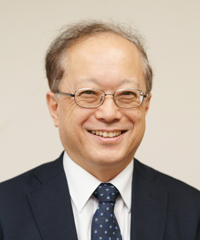It is said that for children with developmental disorders such as autism spectrum disorder or Attention Deficit Hyperactivity Disorder (ADHD), it is better to attend special support classes (school) rather than regular classes. Among the reasons given is the low student-teacher ratio which enables teachers to give closer attention to each student's condition and to provide education according to individual needs. In fact, in regular classes, the student-teacher ratio is about 30 to 1, while in contrast, the student-teacher ratio in special support classes (schools) is 4 to 1.
This way of thinking also exists in the world of childcare (preschool education). The ratio of children to teachers differs according to age group; for example, in the case of four-year-old children, the ratio is 30 children to one teacher. In contrast, in New Zealand or Switzerland, the ratio is from 5 to 7 children to one preschool teacher*1. At an international conference on preschool education in the past, I remember one representative from Japan saying with a sigh that "I feel proud of the good childcare that is offered in Japan, but in our system, the ratio of children under the care of one teacher is the same as that of developing countries, so we are not really recognized by the childcare system in Europe."
Most people will probably think that it is better to have a low teacher-child ratio, but is that really true?
If the number of children per teacher is low, the time spent with each child within a given time period will be naturally be higher. However, that conversely means that children will spend less time interacting with only their peers. In other words, the issue of a good student-teacher ratio leads to the question: Which interaction better promotes learning? Interaction between children and the teacher or interaction between children themselves?
Wise readers will probably answer as follows: "That's hard to say because it depends on the content of what is studied. In some cases, children will learn better through contact with the teacher, and at other times, they will also learn through contact with other children." Other readers will reach the same conclusion from a different viewpoint: "If better education (childcare) is provided when there are fewer children per teacher, then children in New Zealand and Sweden should perform better than children in Japan. But that is not the case, so it is not possible to say which is better."
Nevertheless, in the world of early childcare at least, it is widely believed that a lower ratio of children to teachers results in good childcare. That is hard for me to understand, and I ask researchers about this, but I have not yet received a satisfying answer.
However, recently from a completely different direction, I came across a way of looking at the situation that may be the key to solving this issue. Professor Joseph Tobin and Assistant Professor Akiko Hayashi, together brilliantly explain the differences between early childhood education in Japan, the U.S, and China from the perspective of cultural anthropology, and they have applied this perspective in a book*2 that explains the characteristics of Japanese childcare based on extensive records of childhood education in Japan.
Tobin and Hayashi found that at childcare centers and nursery schools in Japan, teachers tended to watch on the sidelines rather than entering into disputes and disagreements. As one contributing factor, the claim is made that the number of children per teacher is maintained due to cultural reasons. Furthermore, "If classes were smaller, the teachers would be more apt to interfere, and children would miss the opportunity to enter into a conversation with their peers in a highly emotional setting without an adult interfering." Elsewhere in the book, the authors observe that "this (practice in Japan) is one benefit of large class sizes and reflects an unspoken cultural belief."
I hope that readers who are practitioners and researchers of early childhood education and care in Japan will assert and explain this perspective to colleagues and those concerned in Europe and the United States.
- *1 Child Research Net, Early Childhood Education and Childcare around the World at a Glance - ECEC Matrix 2020 of Various Countries and Regions -.
- *2 Hayashi Akiko, Youjikyouiku no esunogurafi: Nihon bunka shakai no naka de sodachiyuku kodomotachi [An Ethnography of Early Childhood Education: Children growing up in Japanese culture and society], 2019, Akashi Shoten.



 Yoichi Sakakihara
Yoichi Sakakihara










